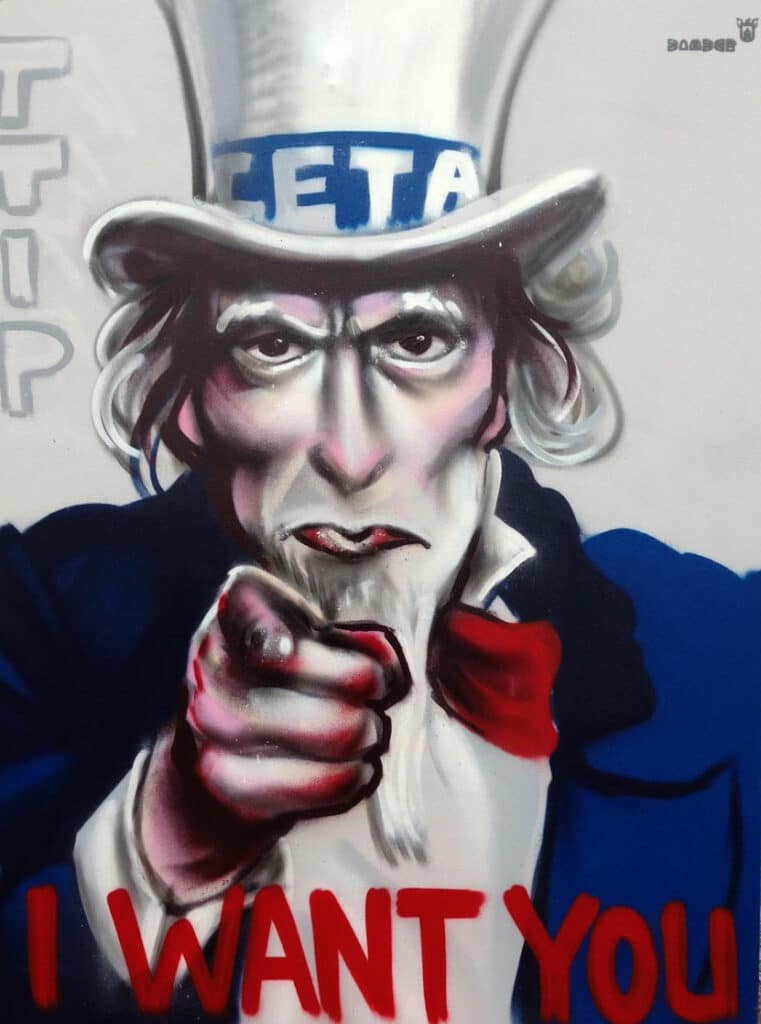Helge Steinmann, in the street art scene, is better known as “Bomber One”, a graffiti-institution in Germany. Born in Hessen, he studied communication design and became active as a graffiti artist in the late 80s. Mainly operating in and around Frankfurt he is also known internationally as an analyst, co-creator, and guest to various events and campaigns. His work has been published in a number of magazines and publications. In an interview with us he spoke about his career as an artist, about the freedom of the arts, and appreciation of oneself, the process of learning and education, as well as idea generation, and the daily struggle with structures and restrictions.
About courage, “to take the plunge, to go out at night and add something to the world.”
This sentence of course literally contains the process of the artist having the courage to spray a work, mostly outside and in secret. But furthermore it means to have the grit to express yourself in a public space; present ones’ art piece to the world and take advantage of the medium of art, to let everyone know ones’ position. Because “even if you seem to be invisible to the outside, the medium gives you a voice.” To become successful doing art isn’t easy. Helge Steinmann worked nearly two decades on his goal to be able to live from his graffiti and told us about his rocky road and his belief to have faith in yourself and never give up. “I’m certain, that you have to stick with some of your decisions for quite a while, so that one day they will lead you to success.”
About the generation of ideas and improvisation
“In the past, experimenting was much more thrilling than the final outcome.” Experimenting, again implies to dare and much more importantly, to start somewhere; no matter how sketchy or colorful, written or due to a recording. Improvising and processing your ideas to create a whole describes an action that requires time and patience. Bomber One talks about flashes of inspiration from his daily life, not about extremely exceptional ideas, which we can use to create a masterpiece. “I get my ideas out of the daily life. I read an article in the newspaper, get something sent via Facebook or see an image. The impressions are diverse and I am not able to source precisely where the images come from. I write down spontaneous brainwaves or sketch a brief note. If my ideas finally and successfully get converted, it is determined in the moment.” Moreover, improvisation also means that a draft that is created in a moment doesn’t necessarily have to be perfectly elaborated, but is allowed to represent an instant snapshot. “For the most part, I find this kind of approach a lot more appealing than the perfect drawing/painting. It contains within it the sensation of the instantaneous situation. That does not mean that the outlines I draw remain. If I get into something completely different next year, my attitude changes again.”

“I do something; I’m having fun doing.” About the economic value and the personal satisfaction
To learn to love oneself and one’s art is a big challenge for every artist. Often it’s about success, money, competition, and the critique of the public. But Helge Steinmann emphasizes that the personal satisfaction should come first and besides, art should definitely be fun. “I look at oeuvres detached from the clients’ perspective, because they’re unique. Of course I’m happy, if other people are fond of my work, but my valuation is primary. First of all, I am the target audience and if I like it, then I’m content. If others enjoy it, it’s even more pleasant, but not necessary. I have to be able to back the opus.” Furthermore, he criticizes our constant ambition for material possessions and the commercialization of art pieces. Of course he wants to keep being successful with his art, but that is not the objective; he describes the ephemerality of all belongings in comparison with satisfaction and the possibility to make active use of our time. “Lots of us are in the daily hustle of life and we basically have everything, but are conditioned through media, on an on-going basis, to acquire new products all the time to impress other human beings around us. That cuts both ways. I think it takes less to really be happy. I, myself don’t want to own that much and have noted that I only keep all of my belongings temporarily. We really only possess our life experiences, everything else is inferior to our competence in living our lives. In the end we give away all of the material possessions to someone else or in the meantime they are ground into atoms. We own nothing, that’s an illusion.”
About freedom
“I define Fine Art as free work that is not being controlled and therefore holds huge significance.” Fine Art differs from commissioned work and describes artistry, which forms itself out of your own experiences and values and is then being brought to paper, canvas or even a wall.“ For me, some of the most important criteria are the freedom of the draft and my attitude towards the piece. To me, a painting has value if I feel sorry to give it out of my hands.” Steinmann thinks that “art is permanently in search of open space or even freedom.” Open space, here, means to have the possibility to express oneself unrestrictedly; especially in the public. “The search of art for freedom leads to the breaking of established standards and that, from time to time, the law is being questioned.”
The full interview with Bomber One in German language
Info
Text by Adina Asbeck.
Edited by Stephanie Barnes.
The interview was conducted by Dirk Dobiéy.
Image source: Helge Steinmann & Age of Artists.
